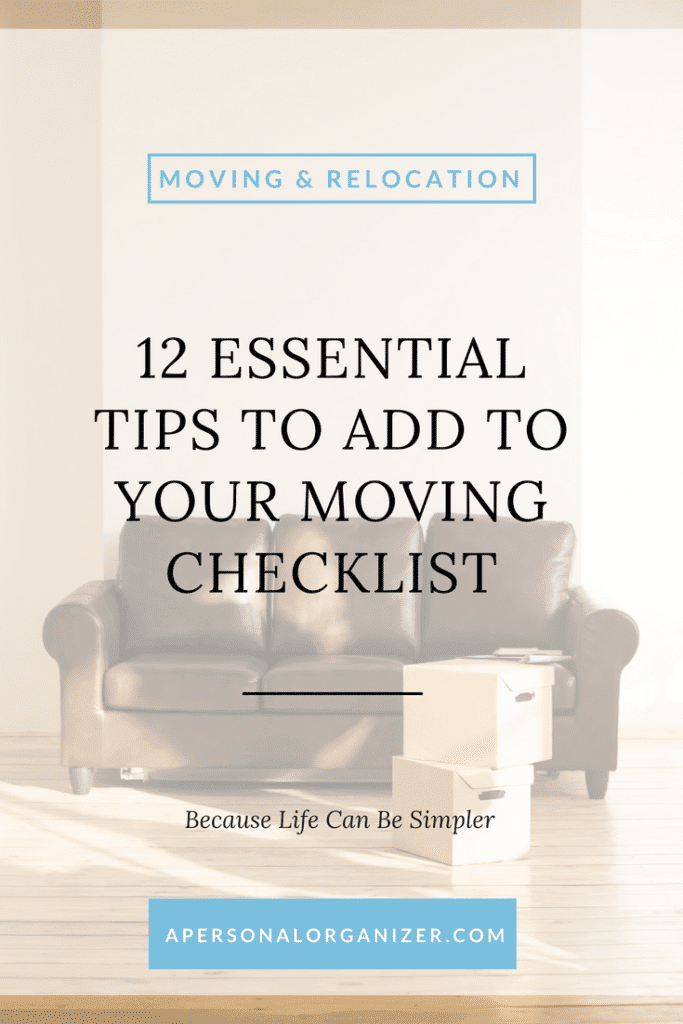Moving out?
You may be moving into your “dream home,” but the moving process itself is nobody’s dream.
Moving means umpteen things to be done. It’s not just about just putting things into boxes, taking them to another place, and unpacking there. The more complicated our lives get, the more the things there are to be done before and after moving.
So how can you make moving out easier and less complicated?
Use a moving out checklist. Having a moving checklist will help you move efficiently and methodically, not to mention minimize the stress that comes with the move.

A typical moving out checklist will have:
- Inventory of goods. It’s best to categorize your goods into perishable, breakable, unbreakable. A room-wise inventory is recommended. Also, a box containing the first day needs marked load last, unpack first.
- A file containing essentials. These essentials can be house documents, insurance papers, packing lists, bills to be settled, travel tickets, keys to the new home, and bills to be settled.
With these essential files, it is important to remember to do these things before moving out:
- Arrange transfer of school records.
- Pay utility and other pending bills.
- Transfer bank accounts.
- Turn off phone, heat, electricity, and gas connections.
- Disconnect television and Internet cables.
- A pre-moving out list of things to be done. Before moving out, make sure you take care of the following items:
- post office notification;
- insurance for valuables,
- health checks, and medications;
- closing club, gym, library, and any other memberships;
- canceling or changing delivery addresses of newspapers and magazine subscriptions;
- returning any borrowed things;
- finding new homes for pets (if needed) and plants;
- confirming travel plans.
- Pack a special moving out travel kit.
- This kit will contain cash, checkbooks, credit cards, personal phone book, phone, computer and tablets with respective chargers, identity card, flashlight, keys to the new home, toiletries, change of clothes, emergency medications, food, towels, alarm clock, games for kids, hat, and depending on the time of the year you’re moving, jackets and accessories.
- List of items to be sold/placed in storage.
- Surely there are things that you may not bring with you to your new home or things that need to be given a new look. This list may include things to be repaired, replaced, painted, or refurbished.
- List of legal papers and keys. These are the ones that need to be handed over to the landlord or new owner of your home.
- A folder containing details of movers. This should include the truck number, drivers ID and cell number, as well as addresses and phone numbers of their office at the destination and call center or tracking center. This also includes an envelope containing cash or cheque to settle the mover’s bills.
- A list of arrangements to be made in your new home before you arrive. You will need a working phone, installing utilities like gas, electricity, and heat, putting in cable for the television as well as internet, turning on the water supply, getting the painting, as well as any other alterations or repairs, done before the trucks arrive.
- If you have kids, a folder of records. This will contain birth certificates, school records, medical records, dental records, transfer papers, and anything else required to enroll them in the new school.
- A bare necessities box. Marked No 1, this will contain: toilet paper, towels, soap, shampoo, bath towels, paper towels, insecticide, cereal, dehydrated milk, coffee, and other must-haves.
- A new home must do list. This list may include: validate your car papers and drivers license, renew or get new insurance, put all legal papers in order (check applicable laws), make a list of emergency numbers: hospital, police station, social services, fire station, doctor’s clinic, and vet.
To make things even simpler, you can create separate general checklists before and on the day of the move:
Checklist For Moving: A Month Before The Move
- Submit your change of address forms to post office.
- Obtain documents for school transfers, if you have children.
- Find a moving company and make reservations.
- Give your new address to friends and family.
- Hold a garage sale or otherwise lighten the load.
Checklist For Moving: One Or Two Weeks Before
- Move your banking accounts to the new location.
- Return rented movies, books to the library, etc.
- Get your prescriptions transferred to the new location.
- Clean your house.
- Call for utility shut-offs and new connections.
- Dispose of things that won’t be moved.
- Begin packing and labeling boxes.
- Organize and pack an “essentials” box for arrival (toiletries, paper plates, etc.).
- Final moving plans (make hotel reservations, get maps, etc.).
Checklist For Moving Day
- Remember to eat.
- Start early.
- Check every room and storage area.
- Turn off all lights, lock the doors.
- Give the keys to the new owner or real estate agent.
It’s also wise to consider some facts about your destination — the kind of weather, climatic changes, urban or rural, water portability, infrastructure in the new home, size of the home, colors of walls, rules made by the landlord in case it is a rented home. Some landlords specify no nails on walls.
Be well prepared to move out of your home. With a moving out list that is personal and simple, you can make the move as smooth as possible. If you are well organized, surely moving out will be hassle-free!





